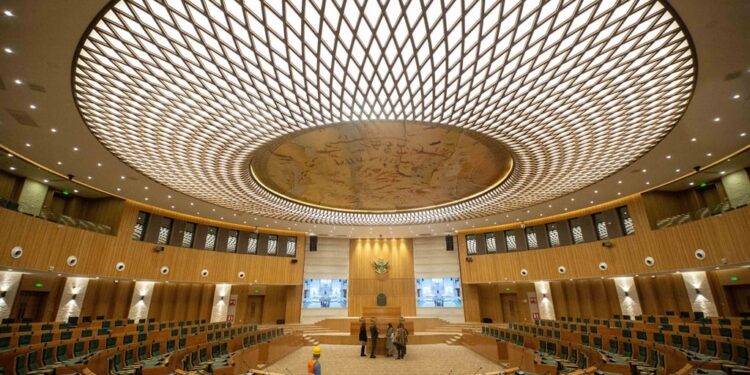THE Parliament of Zimbabwe is permanently moving its secretariat and other offices to the new imposing Chinese-built edifice situated at Mt Hampden out the outskirts of Harare.
The impressive infrastructure project, known as the New Parliament Building, was constructed at a total cost of US$200 million.
In a notice at the weekend, the legislature said the relocation process starts Monday, October 30 and is scheduled to take up to two weeks to complete.
“The Parliament of Zimbabwe wishes to inform all its valued stakeholders that it is relocating from the current building located in the Central Business District (CBD), to the new Parliament Building located in Mt Hampden.
“The relocation process is expected to take approximately two weeks, beginning on Monday, 30th October 2023. In that regard, some services provided by the Parliament of Zimbabwe may be temporarily interrupted or delayed during this relocation process,” reads the notice.
“The historic relocation follows the successful handover of the New Parliament Building by the People’s Republic of China to His Excellency, the President of the Republic of Zimbabwe, Dr. E. D. Mnangagwa, who subsequently handed it over to the Speaker of Parliament.
“The New Parliament is a magnificent and imposing edifice that symbolises the enduring cultural heritage, abiding values, hopes, aspirations and achievements of the Zimbabwean people.”
The administrators at Parliament expressed commitment to ensure that critical services continue to be provided through its personnel stationed either at the CBD or the New Parliament Building offices.
“We wish to apologise for any inconveniences that may be caused by the relocation and we appeal to all stakeholders and the general public to bear with us during this transitional process. We remain committed to serving you better from our new premises.”
Recently, President Emmerson Mnangagwa presided over the official handover ceremony of the New Parliament Building constructed by the Chinese Government, to Government of Zimbabwe.
The new infrastructure is described as a harmonious blend of tradition and modernity, with architectural elements that pay homage to Zimbabwe’s rich cultural and historical heritage.
It draws inspiration from symbols, manuscripts, murals, and artwork rooted in the nation’s historical legacy, including landmarks like Great Zimbabwe, and sites related to ancient migrations, such as Mapungubwe, Khami Ruins, and Domboshawa Caves.
Source NewZimbabwe










